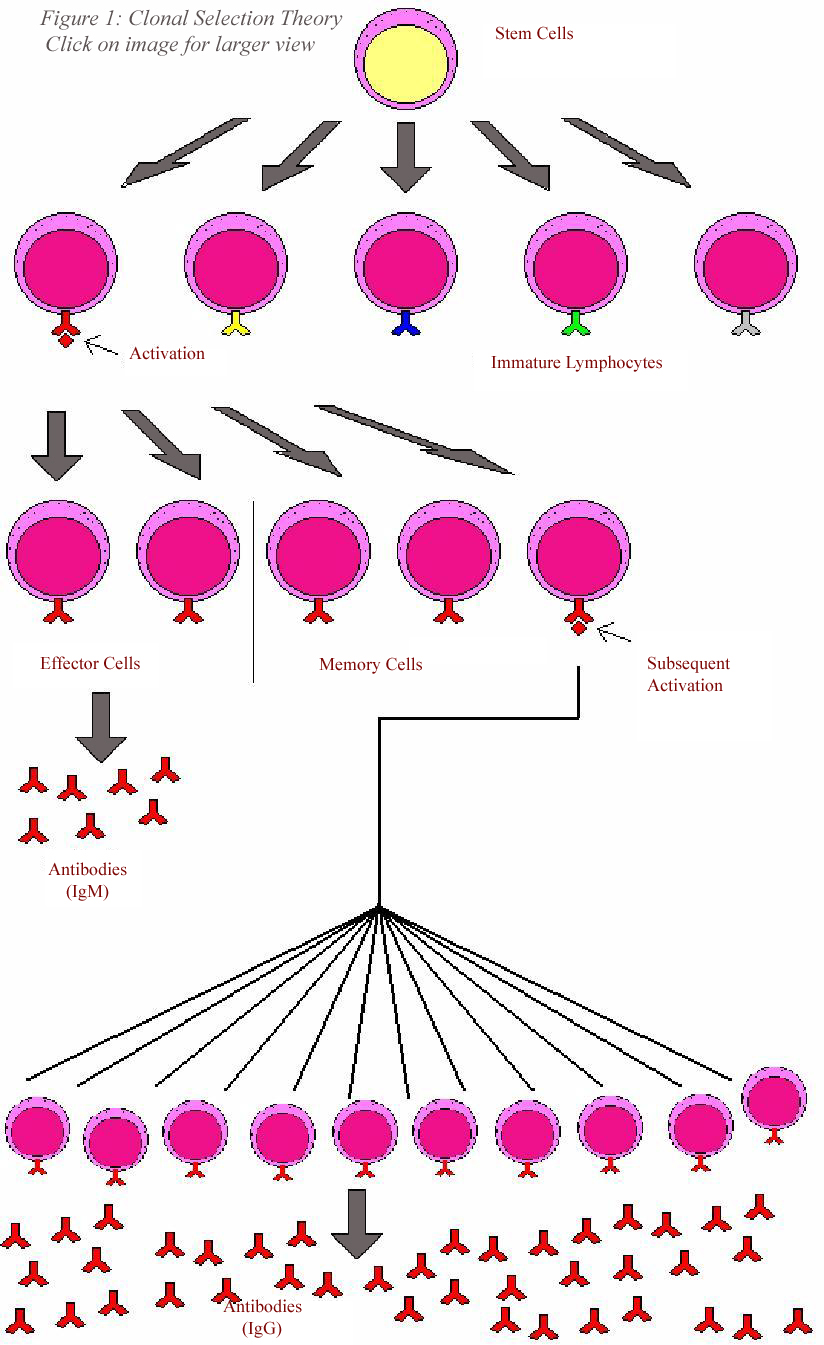Introduction
The mammalian immune system is incredibly effective
at fighting and preventing infection. In an environment literally saturated
with pathogens and potential pathogens, most individuals experience only a
few short-lived incidents of infection. Often, what defines an organism as
pathogenic or non-pathogenic is simply its ability to evade the immune system.
Similarly severe immunocompromise such as HIV infection or that brought about
by chemotherapy demonstrates how effective the immune system is: individuals
lacking a functioning immune system suffer many more and many more serious
infections than a healthy individual.
Divisions in the Immune System
The Immune system is typically broken down in
two ways:
1. Innate and Acquired Immunity; and
2. Humoral and Cell-Mediated
Immunity (CMI)
Both of these divisions are slightly false as
the immune system is really one highly interactive system. However they are
often used and are useful in understanding the different ways in which the body
responds to different infections.
1. Innate and Acquired Immunity
By definition, Innate Immunity is immunity
to infection that is present from birth. It is not antigen-specific and does
not improve with exposure to an infection. It also includes what one might
term non-immunological means of resisting infection; such as the skin
and stomach pH which is a vital part of protecting the body from infection.
Acquired Immunity (or adaptive Immunity) depends on lymphocytes.
Both B- and T-lymphocytes are antigen specific. Each lymphocyte responds to
one antigen only hence the term antigen-specific. For each antigen that the
acquired immune system responds to, there is a lymphocyte with that antigen
specificity. The ability of these single specific cells to multiply is a key
feature of how the immune system works.
This division is slightly artificial,
however, as both the innate and the acquired systems use many of the same cells
and plasma factors and the acquired system is built on the innate one.
2. Humoral and Cell Mediated Immunity
These terms apply mostly to the acquired immune
system. Humoral means chemical immunity: by use of soluble factors found in
blood plasma. Cell-mediated means that the immunity is derived from the properties
of cells. This terminology is misleading as both the humoral and the cell-mediated
immune systems both use cells and both use soluble factors to fight invading
organisms. The definition depends on the mechanism by which the pathogen is
killed. The humoral system uses antibodies to attack pathogens, whereas the
primary mechanism of attacking pathogens in the cell-mediated arm is via cytotoxic
T cells. The humoral immune system is primarily responsible for killing bacterial
pathogens, whilst the cell-mediated system provides immunity to viruses.
Clonal Selection Theory
Clonal Selection Theory
is the basis of adaptive (acquired) immunity. It was first proposed by Macfarlane
Burnet in 19571- and he subsequently won the  Nobel prize for his
work.
Nobel prize for his
work.
Figure 1 is a simplistic
illustration of how clonal selection works. Each of the naïve lymphocytes
at the top of the diagram has a different coloured receptor, indicating the
fact that each receptor binds to a different antigen.
The binding of antigen to that receptor causes
division of that cell and differentiation into effector cells and memory
cells. These cells all have the same antigen receptor and hence the same
antigen specificity.
The effector cells are relatively short lived
whilst the memory cells persist for many years. In the advent of subsequent
activation by the same antigen the cells again divide and produce effector
cells.
In figure 1, the lymphocytes are
B-lymphocytes as they produce antibody but the same principal applies to
T-lymphocytes. The binding of antigen triggers replication of lymphocytes.
Cytokines
The cells of the immune system work in a
coordinated fashion. This is possible because they communicate via small
proteins known as cytokines. (Greek: cyto-cell, kine-communicate). One
cell will release these proteins and they then bind to specific receptors on
the target cell. Some of the cytokines
are known as interleukins (inter-between, leukin – white cell). The interleukins
were numbered: IL-1, IL-2, IL-6 etc. Confusingly some of these also have
alternative names, such as IL-15 which is also know as T-cell growth factor.
This second name is quite useful, as it indicates the function of IL-15, namely
to promote the growth of T-lymphocytes.
CD Molecules
There are over 200 CD molecules. They are known
by a number, for example CD-4, CD-8, CD-52 etc. The names are entirely uninformative
in terms of their function and are historic, reflecting that each of these
molecules was identified by mono-clonal antibody technology. There were named
in the order they were discovered. All of them are proteins or glycoproteins
that are found on the surface of cells.